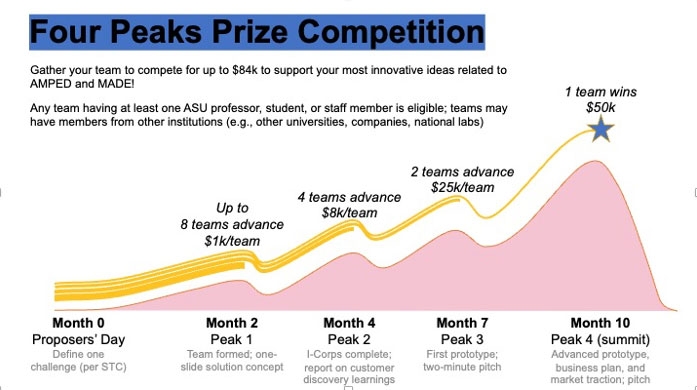Q&A: How Proposers Day pairs ASU researchers, companies to identify industry challenges
Arizona State University’s five Science and Technology Centers, or STCs, are a major aspect of the New Economy Initiative to establish the state as one of America’s leading tech hubs.
STCs bring the university’s research expertise and facilities into partnership with industry to solve a broad array of technical challenges and train the workforce of the future. Central to the STC calendar are semi-annual Proposers Day events, the most recent of which was held March 22 at Sun Devil Stadium.
Here, Zachary Holman, an associate professor in the Ira A. Fulton Schools of Engineering and the director of the Advanced Materials, Processes, and Energy Devices (AMPED) STC, explains Proposers Days and discusses a new initiative to enable even greater impact.
Question: What happens during an STC Proposers Day?
Answer: ASU researchers and industry experts gather to share ideas about challenges they face in the fields that are the focus of a given STC. An example for the AMPED STC would be to discuss the main technical hurdles that prevent deployment of solar energy systems and batteries on the electricity grid at twice the rate they are now. So, Proposers Day is not about offering solutions; it’s about identifying problems. We do that so we can issue a call for proposals or a funding opportunity announcement for teams of university and industry talent to begin creating solutions.
Q: Do you share examples of teams already working on solutions?
A: Yes, we heard two great presentations from STC projects that were funded at the first Proposers Day a year ago. One of the projects brought together an ASU faculty member, Trevor Thornton, and a large, international company, Northrop Grumman, for work on the use of diamond as a material in power electronics. The other involves a faculty member, Keng Hsu, and a smaller, local company, PADT, to enable simpler, cheaper, better printing of metal components.
These kind of project updates enable members of the Proposers Day audience to envision themselves forming teams to engage in meaningful projects through the STCs.
Q: Alongside highlighting these success stories, how else do the STCs promote involvement?
A: STCs primarily foster collaboration between ASU faculty and existing companies to bring new technologies to market. But we know we could do more to support the development of entirely new companies to create and market technologies. We already have entrepreneurial fellowships to support established postdocs and graduating PhD students as they launch a tech business, but we haven’t necessarily had a mechanism for supporting new talent and creating the next generation of entrepreneurial fellows. So, we’ve created the Four Peaks Prize Competition to encourage those people and the formation of those new ventures.
Q: How does Four Peaks work?
A: It’s modeled after the U.S. Department of Energy's American-Made Challenges, which have been highly successful for a few years now. It begins with an STC defining a broad technical challenge or problem, and then teams come together with at least one ASU student, faculty or staff member and they get to work in creating solutions across the four stages, or peaks, of the competition.
The first peak is simply submitting a single presentation slide about your team and the concept for your solution. From among those submissions, eight teams will be awarded $1,000 each and move through the competition. The next peak is focused on deeper understanding of the problem from the perspective of the customer. We call that customer discovery. Four teams will then be selected to move on to the next stage, and they will each get payment of $8,000. The third peak then requires an initial prototype of your tech solution and a short pitch on how your solution addresses customer needs. At that point, two teams are awarded $25,000 each and move on to the final stage. Peak four involves a more advanced prototype and understanding of a business model that operates around that technology. One team will then win the grand prize of $50,000.

Illustration courtesy of Zachary Holman/ASU
Q: Are there any strings attached for the use of that money?
A: No. It’s very flexible. Teams can spend the funds however they deem will best support their progress in the competition. So, it’s a different approach than with a grant. The dollars are awarded incrementally without any specific scope of work associated with them. It should be a great means of building up these entrepreneurial teams and expanding the impact of the STCs.
The next STC Proposers Day is scheduled for Oct. 20, 2023.
Top photo: Assistant Professor Zachary Holman poses for a portrait in the Holman Research Group lab. Photo by Deanna Dent/Arizona State University